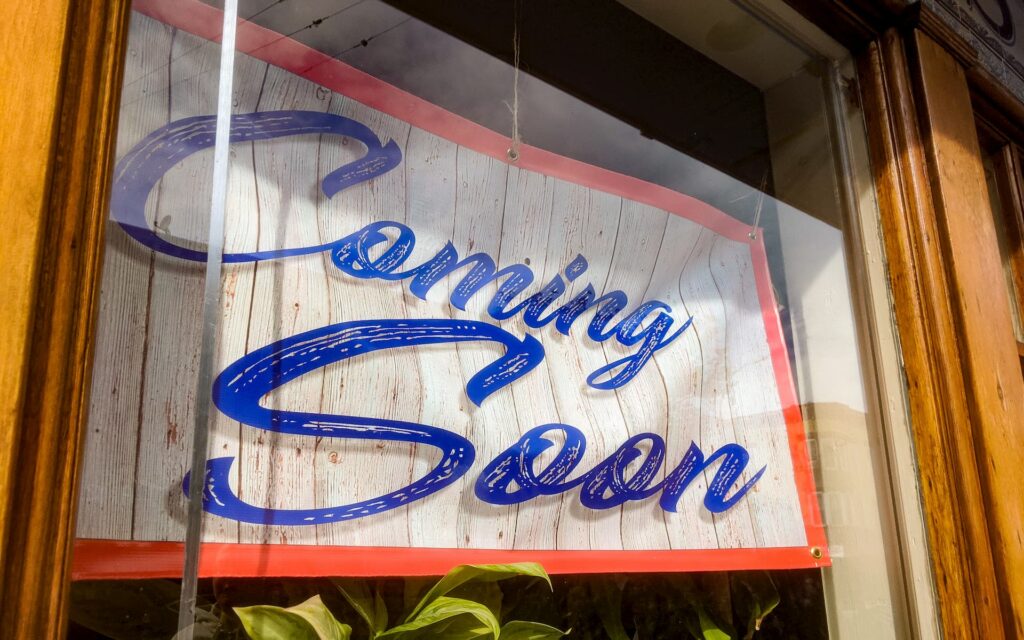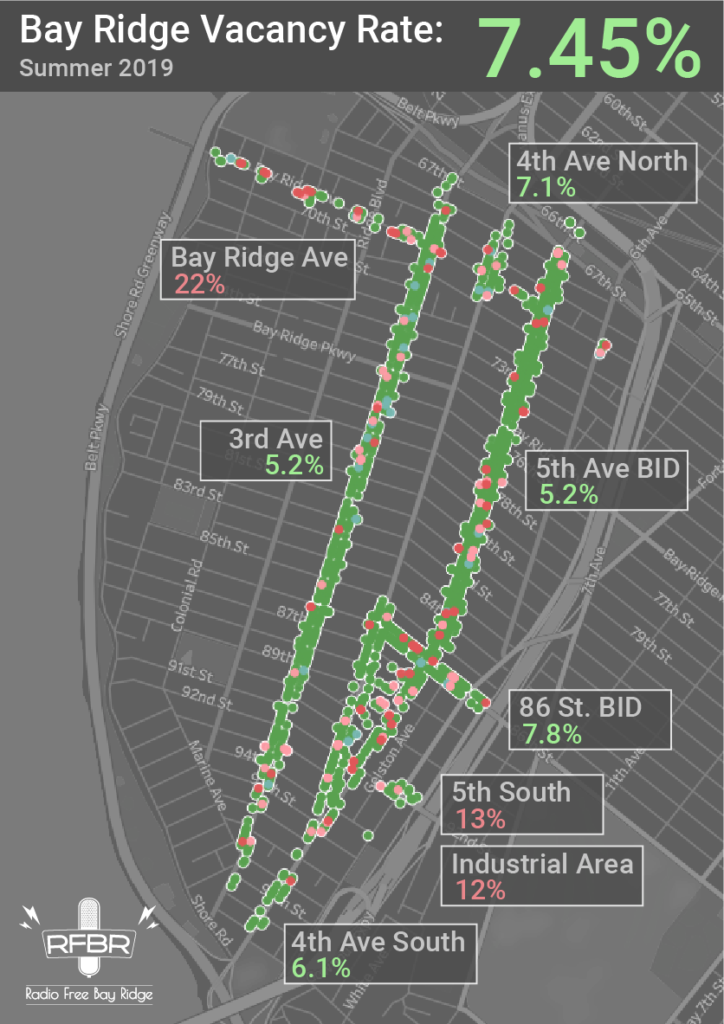The stores are all closing! Or are they? Today we’re going to dig a bit deeper into the Bay Ridge Vacancy Rate. We’ll be exploring the psychology of empty storefronts, and why the problem is perceived as worse than it is. More importantly, we’ll discuss how a “vacancy” narrative centers property owners and landlords at the expense of workers and small business owners.
We’ll also go behind the scenes at our mapping methods, discussing how we came up with our numbers, how we’ve updated them over time, and how we ensure accuracy.
We’ll also be discussing the importance of placemaking as an urban planning concept. Placemaking influences our preconceptions about our avenues, which in turn dramatically influences their economic health. We are their primary customers, after all, and what we think matters. A strong sense of place can help our merchants withstand challenges from online retail, changing consumer demands, and more.

Show Notes
Expand to view Audio Bookmarks…
- Introductions
- Why are vacant storefronts bad?
- A history of the vacancy crisis narrative
- How BIDs affect vacancy rates
- The psychology of vacancies
- Our data collection methodology
- The Bay Ridge Vacancy Rate
- Comparing Bay Ridge to NYC
- Understanding store owner’s economic issues
- Moving away from a property-owner-centric narrative
- What is a healthy vacancy rate?
- Do BIDs affect vacancy rates?
- How progressives are engaging with local businesses
The importance of walkable streets - What is placemaking?
- Conclusion
Our Bay Ridge Vacancy Rate Map…

Our interactive map lets you highlight specific areas of Bay Ridge, filter your view to see specific store categories (vacant, for rent, rented, etc.), and look at data from past months.
Help out with the neighborhood Business Needs Analysis…
We mentioned that there is also a big three-year study happening across all of Bay Ridge, led by the Bay Ridge 5th Avenue BID. Community Board member Michael Devigne will be leading the study, which is called a Commercial Needs Assessment. The study is funded through an Avenue NYC grant.
A major part of the study is a consumer survey, which is available now! Be sure to fill it out if you have a few minutes and help out your local small businesses.
Other nearby neighborhoods have already finished their own studies. Check out the reports from Coney Island and Downtown Staten Island to get an idea of what the final report will include!
Further Reading
More About Vacancy Rates…
- We mentioned bogus reporting in 2018 that exaggerated the vacancy rate at over 20%. Read more about how that happened.
- Comptroller Scott Stringer recently released new citywide data that uses LiveXYZ to estimate citywide vacancy rates. We have major reservations with the accuracy of the data, especially the historical data collected by LiveXYZ. That said, it provides a much more reasonable vacancy rate: about 5% in Brooklyn in 2017.
- You can also check out the forecast for the national vacancy rate, which is much higher due to an emptying-out of malls and big box stores in the suburbs.
- Our metric of 4% as ideal, and 5-10% as “healthy” comes from a recent NYC Department of City Planning Report.
- Other brokers consider 5% ideal. Our research follows this number all the way back to the 90’s, when malls intentionally kept about 5% of their stores vacant so they could quickly move in new tenants.
More About Placemaking…
- Project for Public spaces does a great overview on what placemaking means, and how it can be a tool for more vibrant, healthy communities.
- We mentioned that the Bay Ridge 5th Avenue BID is conducting a placemaking study in Bay Ridge. The study will be led by Sarah Aita through NYC’s Small Business Services Neighborhood 360° program. Learn more about Sarah in her fellowship profile.